Recent Posts?

Lorem ipsum dolor sit amet, consectetur adipisicing elit. Amet nesciunt qui sit velit delectus voluptates, repellat ipsum culpa id deleniti. Rerum debitis facilis accusantium neque numquam mollitia modi quasi distinctio.
Necessitatibus nihil impedit! Ex nisi eveniet, dolor aliquid consequuntur repudiandae.
Magnam in repellat enim harum omnis aperiam! Explicabo illo, commodi, dolor blanditiis cupiditate harum nisi vero accusamus laudantium voluptatibus dolores quae obcaecati.
What is automation testing? Automation testing is using external tools to test software before it moves to the next development phase or end user. Automation testing saves time and money and avoids errors in manual testing. It also accelerates the time-to-market of a software application.
What is the automation framework? An automation framework provides a way to standardize test process components for comprehensive and efficient results. It includes guidelines, protocols, tools, and rules for testing. The framework may include coding standards or protocols such as managing access to test environments.
What is a framework in test automation? In test automation, the framework includes components that help run tests and provide comprehensive test results. These components can include testing tools, scripts, and automated testing rules What is a data-driven automation framework? A data-driven automation framework enters and stores data from a spreadsheet.
Why is automation testing necessary? Automation testing is not required, but is more useful than manual testing. It eliminates time-consuming and tedious work, high labor costs, and the need to test on multiple devices and systems. After all, it saves money and time.
What is Test Automation and Why Do We Need It? What is software test automation? Automated testing is the process of using software tools that put newly developed software or updates through a series of tests to identify potential coding errors, bottlenecks, and other performance barriers.
Software test automation tools perform the following functions:
• Implementation and running of tests
• Analyzing the results
• Comparison of results with expected results
• Generating a report on the performance of the development software
When testing new software or software updates, manual testing can be expensive and tedious. Whereas, automated tests are cheaper and take less time. Automated tests can help detect failures faster, reducing the chance of human error. It's also easier to run it multiple times for each change or until you get the results you want. Automating also speeds up the process of bringing software to market. Automation allows for extensive testing in specific areas so you can address common issues before moving on to the next step.
Test Automation Pyramid The test automation pyramid helps you understand how often you should run each type of test. The test automation pyramid divides tests into four levels. The bottom tier represents the tests you should perform most often. The levels get smaller as you get closer to the top of the pyramid, representing tests you need to do less often.
Here are the types of tests the test automation pyramid shows you should do from most to least:
• Unit tests
• Integration tests
• API tests
• UI tests
1. Unit Unit testing involves breaking down development software into digestible units to detect any bugs or performance issues. Unit testing helps detect bugs before the software development process goes too far. This type of testing happens at the earliest stages of software development and isolates and addresses issues before moving on to testing. Unit testing is the type of testing you should do most often because it ensures that the smallest software components all work correctly before integrating them into the whole.
2. Integration After checking that each component of the software is working correctly, it is time to combine them to determine if they all work together. Integration tests verify component interactions, including within the same software program. It is very important that all integrated components interact correctly with the software or external services such as web services. For this reason, most people prefer to create a database for integration testing to list all possible scenarios. You won't have to do integration testing very often, as you'll be fixing most of the code bugs during unit testing.
3. API Application Program Interface (API) testing tests whether two different software components can communicate with each other in various situations. Some types of API testing are:
• Confirmation test
• Functional testing
• Security testing
• Load test
4. UI User interface (UI) testing (also known as GUI testing) ensures that software works with a variety of user interfaces, such as operating systems, browsers, and other places end users interact. UI testing evaluates features such as functionality, visual design, performance, and usability. Fortunately, UI automation testing eliminates the need to purchase multiple devices for testing. UI test automation takes the end-user experience into account and helps shape the software to fit that interaction. The UI test automation framework should include test cases related to system and process bottlenecks. UI testing should be the least time-consuming test, as all previous testing steps should have identified and fixed most of the problems the software might have. UI automation tools save even more time.
What are the Basic Criteria for a Successful Test Automation Process? The main purpose of test automation is to detect software errors and fix them before a project moves to another phase or reaches the end user. A successful test automation process takes less time and produces software that behaves and delivers functionality as intended
1. Having a Dedicated Team Having a dedicated team to test the software is essential. Developers, testers, and the quality assurance team can be involved in different parts of the testing process, ensuring that nothing is overlooked at every level of testing.
2. Having the Right Tools Choosing the right automated test automation tools is critical. Automated testing tools work best:
• Easy to use
• Ability to test various operating systems, browsers and devices
• Equipped with the necessary tools (full stack) to test what you need
• It can support your coding language and be easy to use even for people who don't know coding language or have no coding skills
• Reusable for multiple tests and modifications
• Ability to leverage large datasets from multiple sources to provide data-driven validations
3. Having a Reserved Budget If you're already investing in software development, having a dedicated budget for test automation software, development, and training can save you money in the long run. You'll spend less time doing manual testing and get the software up and running faster.
4. Implementing a Strong Testing Framework What is a testing framework? A testing framework with guidelines, best practices, tools, and guidelines for testing can save time and effort. A good web automation framework should integrate various functions such as:
• Libraries
• Test data
• Reusable modules
• Third-party tool integration
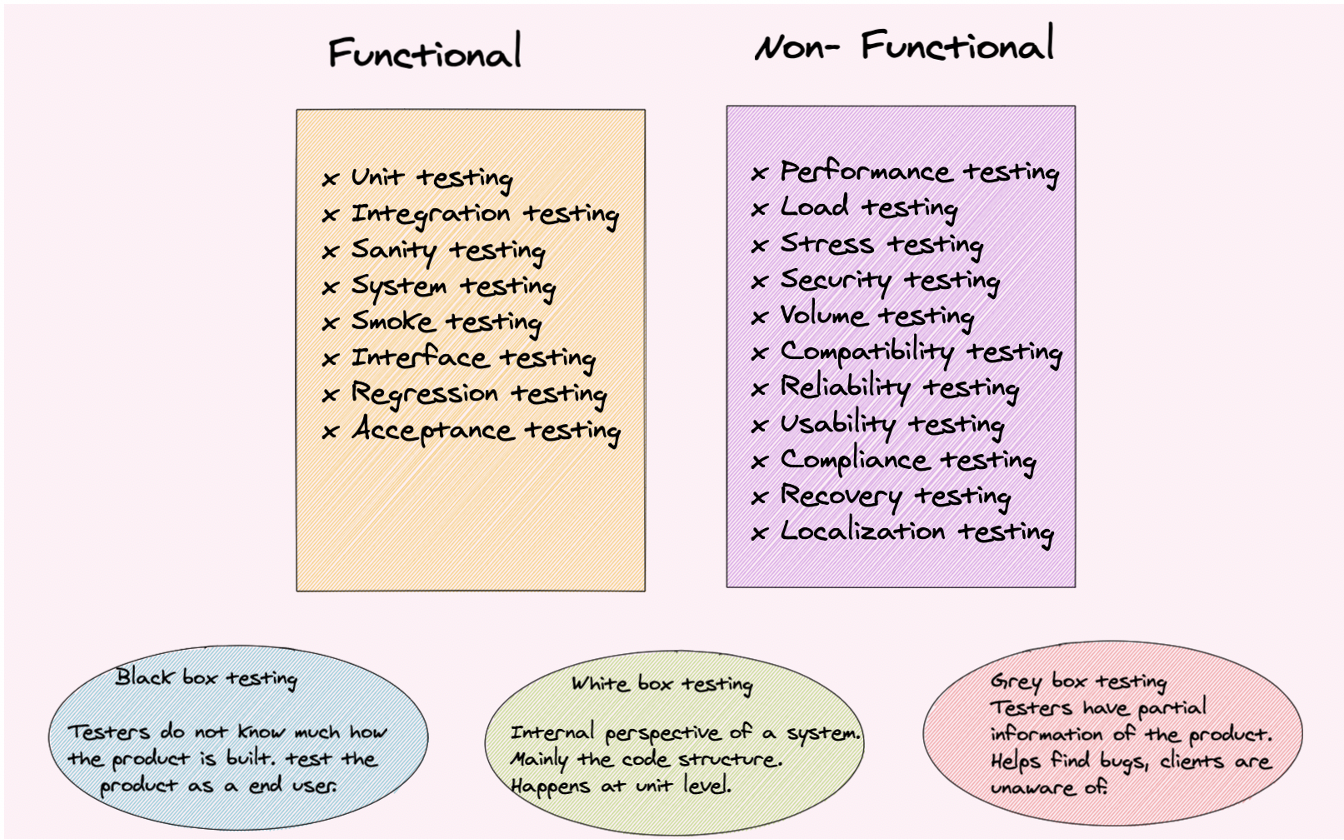
What are the Autotest Types? While there are many types of tests that can be automated, here are some of the most common.
1. Functional Tests Functional testing helps determine whether the software or application is working according to expectations. It tests whether the software produces the correct results without errors or loopholes.
2. Non-Functional Tests Dysfunctional tests measure a variety of things, including:
• How well the software performs in various situations
• How well the software performs under expected user loads, including peak usage
• How well the software performs under the heaviest load conditions
3. Code Analysis Code analysis looks at the code and identifies problems through testing, for example
• Unnecessary code and performance loops
• Code not working
• Code with interface problems
• Code that has internal conflicts with other codes
4. Unit Tests Unit tests evaluate individual software components. The purpose of unit tests is to ensure that the core functionality of certain units within the software is robust and bug-free.
5. Integration Tests Integration tests ensure that units work together when connected to each other. It examines whether the components cooperate logically and produce the correct values. It also tests whether the modules work with third-party tools.
6. Smoke Tests Developers use smoke tests to verify the stability of the entire system after each new build.
7. Performance Tests Performance tests measure how well the software works. Its main concerns are the overall quality of the software, its failures, speed and scalability.
8. Regression Tests Regression testing ensures that new code, bug fixes, or updates do not break the functionality of pre-existing components within the software.
9. API Tests API testing ensures that two components can reliably and securely communicate with each other in various scenarios. An API test automation framework should be easy to use, scalable, and reusable.
What Processes and Test Types Should You Automate? The goal of any automation scenario is to speed up testing time and reduce costs, which is why data-driven automation is crucial. Here are a few examples of processes where automation can help:
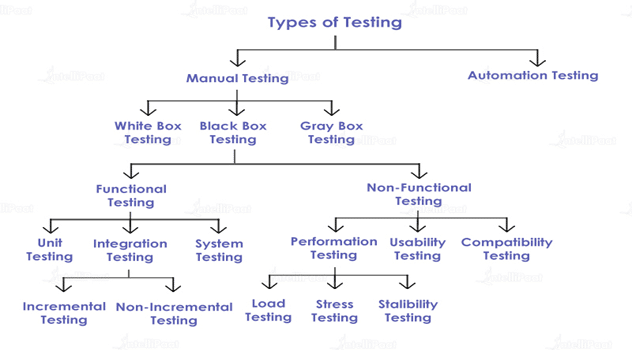
1. Repeated Tests All sequential and regularly repetitive tests benefit from automated tests because they can run faster than manual tests.
2. High-Risk Tests Automation allows you to isolate and address potential error points before you start modifying any code. Avoiding changing the code prevents the development cycle from slowing down unless the test detects a problem.
3. Time-consuming Tests Manual tests take longer and are error-prone. Automating tests reduces the manpower required to run the tests and the likelihood of not catching critical bugs.
4. Versatile Applications When software has a lot of interaction with other applications or software, there is more potential for conflict. Automation ensures that all potential conflicts are captured.
Who Should Be Involved in the Test Automation Process? Automation testing is rarely the job of a single employee. Here are a few examples of people who should be involved in automation testing processes:
1. Developers Developers are the first testers to make sure there are no issues caused by bugs in the code. They deal with the finer details of tests such as unit testing, smoke testing, and integration testing.
2. Test Equipment Testers also do some unit testing and may also do smoke or integration testing. They also do regression testing to make sure new components work with old ones.
3. Quality Assurance Team Using automated tests ensures that the QA team does not need to have coding expertise beyond the relevant fundamentals. Their job is to find issues that developers and testers might miss. They also test the limits of the software's capabilities. A good GUI test automation framework improves the QA team's ability to deal with tests rather than relying on developers or other testers.
4. Stakeholders (End Users) Beta tests from end users are required to ensure that it works properly for those who will use the end product.
Lorem ipsum dolor sit amet, consectetur adipisicing elit. Amet nesciunt qui sit velit delectus voluptates, repellat ipsum culpa id deleniti. Rerum debitis facilis accusantium neque numquam mollitia modi quasi distinctio.
Test Automation Process and Application Checklist A successful test automation system will depend on the following process:
Step 1: Define Test Goals Before choosing the tests to run, determine what you want to achieve with the tests. That way, you don't waste processing time on meaningless results.
Step 2: Prioritize Tests Setting a list of priorities for the test allows you to focus on the most vital areas first and work towards the least important ones.
Step 3: Cross-Platform Applicability It is very important to test whether the software works with various operating systems, browsers and devices.
Step 4: Ease of Testing Tests should be reusable, applicable to other applications, or quickly adaptable to other scenarios. That way, you don't reinvent the wheel when you start test processes.
5: Streamlined Communication Step Make sure everyone who needs input to the test does so and that the information is in a common place. Creating a clear map of who should be involved in each test and results can eliminate undoing redundancy or someone else's hard work.
Step 6: Quality Assurance Using a QA team to validate results is essential. Using a QA test suite eliminates the possibility of missing critical defects in the final product.
Some Common Misunderstandings About Test Automation The biggest misconception about automated testing is that there is a solution for every development software. This belief leads to the following false assumptions.
1. Automation Replaces Manual Testing The best analogy for automation to replace manual tasks comes from the misconception that dishwashers can eliminate all manual dishwashing. However, there are always dishes that need to be washed by hand. The same concept applies to automation testing in software. Automation speeds up common test cases and reduces test workloads. However, it does not eliminate the need for manual testers, especially during the troubleshooting phase where a developer can better identify sources of error.
2. Automation Eliminates Errors Even the best tests will not eliminate errors or system crashes. Some flaws in the code are inherent in the process. Other coding errors only activate in very specific scenarios. Using automated tests is similar to how traffic lights make intersections much safer, but they do not eliminate accidents, bottlenecks or traffic jams.
3. Automation Requires Experience to Develop Many test suites allow beginners to write simple automated tests, although some automated tests are more complex and require an experienced developer.
Things to Keep in Mind Before, During, and After the Test Automation Process As with any testing system, certain assumptions and facts should always be considered.
1. Testing Doesn't Fix Everything Testing is a way to identify problems with a test method. robotic automated process. It is not a one-time solution and will not detect every problem. Retesting will be required until every component works correctly.
2. Haste Invites Mistakes Rushing tests puts the integrity of the test at risk. If you're going to run it, make sure you let each test complete. Stopping before the end because you assume it will yield positive results may result in unexpected surprises later on.
3. Even Tests Can Have Errors Sometimes a test can have an error that occurs only in certain situations. Keep in mind the possibility of test errors when reviewing results and monitor for any abnormalities.
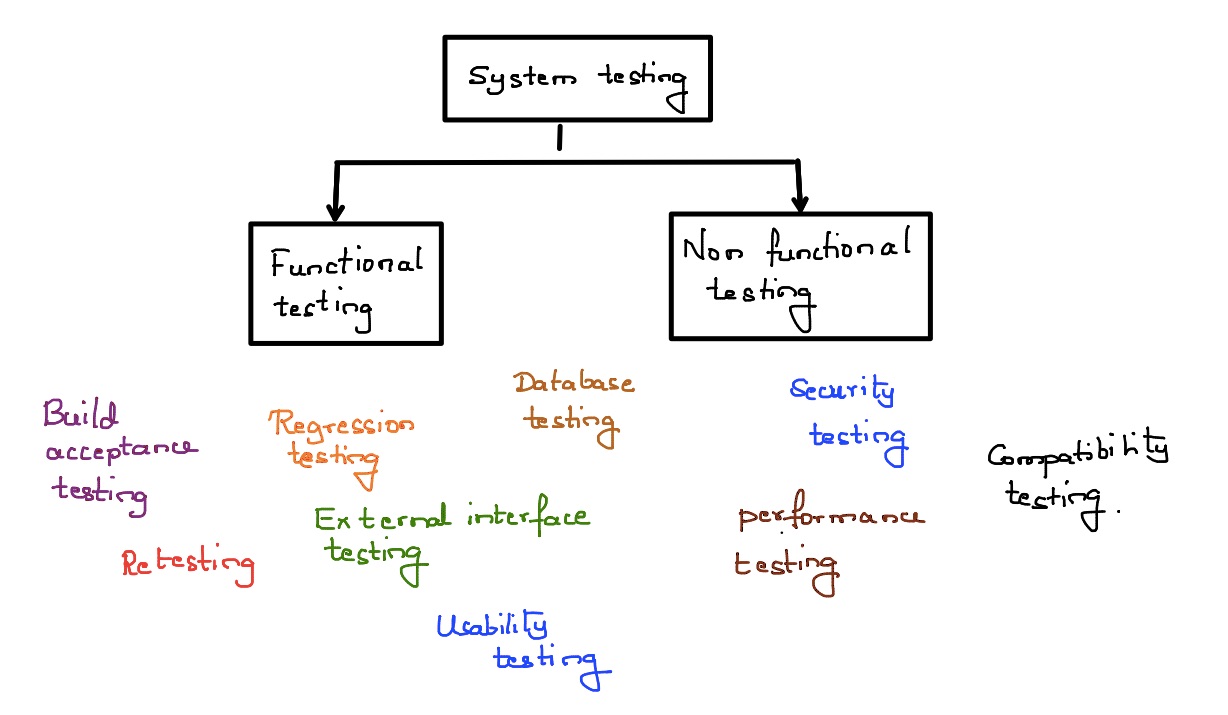
What does Test Automation Engineer mean? Test automation engineer is the professional title given to people who are interested in the test parts of the developed software. They are the people who put forth the necessary work for the software products to meet the user requests. The title of test automation engineer is given to people who are interested in the testing part of the programs that the software team has created. It works to carry out all the controls of the developed products in line with the user requests and to meet the satisfaction of the users. It plays a very active role in the analysis part, which is the second step of the software process, and provides end-to-end controls of the developed applications.
What Does a Test Automation Engineer Do? What are their Duties and Responsibilities? The main task of the test automation engineer is to make complete controls on the developed products and to ensure that the user can use the product comfortably. Apart from that, other duties of test automation engineer consist of:
• Identifying the parts in the product that are not suitable for flow and conveying them to the relevant units,
• Developing test scenarios,
• To create the expected results in test processes according to the analysis,
• Creating error reports,
• To ensure that all errors of the product are corrected until the delivery to the user,
• Performing rechecks after necessary arrangements,
• Acting with the software team.
Requirements to Become a Test Automation Engineer In order to be a test automation engineer, you need to graduate from the engineering departments of universities that provide 4-year education. If you have graduated from departments such as Computer Engineering, Software Engineering, Electrical-Electronics Engineering and Industrial Engineering, you can work as a test automation engineer.
What Education Is Required To Become A Test Automation Engineer? To be a test automation engineer, you need to graduate from Engineering departments. The basic courses you will take during the education are: Introduction to Programming and Algorithm, Data Structures, Database and Management System, Presentation and Presentation Techniques, Software Requirements Engineering, Software Design Architecture, Cyber Security, Object Oriented Programming, General Mathematics.
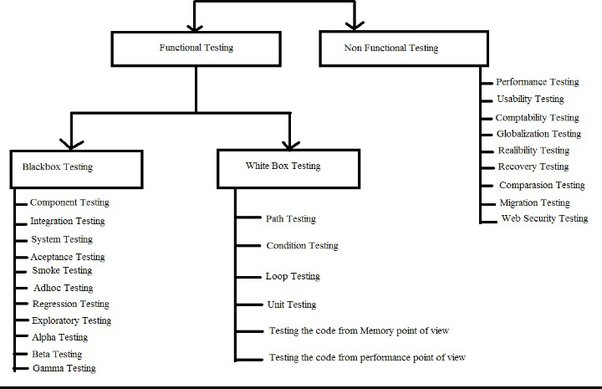 Read more
Read more

Lorem ipsum dolor sit amet, consectetur adipisicing elit. Impedit excepturi laborum enim, vitae ipsam atque eum, ad iusto consequuntur voluptas, esse doloribus. Perferendis porro quisquam vitae exercitationem aliquid, minus eos laborum repudiandae, cumque debitis iusto omnis praesentium? Laborum placeat sit adipisci illum tempore maxime, esse qui quae? Molestias excepturi corporis similique doloribus. Esse vitae earum architecto nulla non dolores illum at perspiciatis quod, et deleniti cupiditate reiciendis harum facere, delectus eum commodi soluta distinctio sit repudiandae possimus sunt. Ipsum, rem.

Programming with Mosh HTML Tutorial for Beginners: HTML Crash Course
freeCodeCamp.org Learn HTML – Full Tutorial for Beginners (2022)
codecademy
Learn HTML tart at the beginning by learning HTML basics — an important foundation for building and editing web pages.
mozilla
HTML: HyperText Markup Language HTML (HyperText Markup Language) is the most basic building block of the Web. It defines the meaning and structure of web content. Other technologies besides HTML are generally used to describe a web page's appearance/presentation (CSS) or functionality/behavior (JavaScript).
tutorialspoint
HTML Tutorial HTML stands for Hyper Text Markup Language, which is the most widely used language on Web to develop web pages. HTML was created by Berners-Lee in late 1991 but "HTML 2.0" was the first standard HTML specification which was published in 1995. HTML 4.01 was a major version of HTML and it was published in late 1999. Though HTML 4.01 version is widely used but currently we are having HTML-5 version which is an extension to HTML 4.01, and this version was published in 2012.
web.dev
Learn HTML This HTML course for web developers provides a solid overview for developers, from novice to expert level HTML. If you're completely new to HTML, you will learn how to build structurally sound content. If you've been building websites for years, this course may fill in gaps in knowledge that you didn't even know you had.
w3schools
Easy Learning with HTML "Try it Yourself" With our "Try it Yourself" editor, you can edit the HTML code and view the result:
geeksforgeeks
HTML stands for HyperText Markup Language. It is used to design web pages using the markup language. HTML is the combination of Hypertext and Markup language. Hypertext defines the link between the web pages and markup language defines the text document within the tag that define the structure of web pages.
theserverside
HTML | HyperText Markup Language. is a text-based approach to describing how content contained within an HTML file is structured. This markup tells a web browser how to display text, images and other forms of multimedia on a webpage.
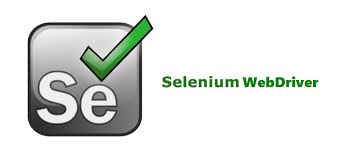
Lorem ipsum dolor sit amet, consectetur adipisicing elit. Impedit excepturi laborum enim, vitae ipsam atque eum, ad iusto consequuntur voluptas, esse doloribus. Perferendis porro quisquam vitae exercitationem aliquid, minus eos laborum repudiandae, cumque debitis iusto omnis praesentium? Laborum placeat sit adipisci illum tempore maxime, esse qui quae? Molestias excepturi corporis similique doloribus. Esse vitae earum architecto nulla non dolores illum at perspiciatis quod, et deleniti cupiditate reiciendis harum facere, delectus eum commodi soluta distinctio sit repudiandae possimus sunt. Ipsum, rem.

Programming with Mosh HTML Tutorial for Beginners: HTML Crash Course
freeCodeCamp.org Learn HTML – Full Tutorial for Beginners (2022)
codecademy
Learn HTML tart at the beginning by learning HTML basics — an important foundation for building and editing web pages.
mozilla
HTML: HyperText Markup Language HTML (HyperText Markup Language) is the most basic building block of the Web. It defines the meaning and structure of web content. Other technologies besides HTML are generally used to describe a web page's appearance/presentation (CSS) or functionality/behavior (JavaScript).
tutorialspoint
HTML Tutorial HTML stands for Hyper Text Markup Language, which is the most widely used language on Web to develop web pages. HTML was created by Berners-Lee in late 1991 but "HTML 2.0" was the first standard HTML specification which was published in 1995. HTML 4.01 was a major version of HTML and it was published in late 1999. Though HTML 4.01 version is widely used but currently we are having HTML-5 version which is an extension to HTML 4.01, and this version was published in 2012.
web.dev
Learn HTML This HTML course for web developers provides a solid overview for developers, from novice to expert level HTML. If you're completely new to HTML, you will learn how to build structurally sound content. If you've been building websites for years, this course may fill in gaps in knowledge that you didn't even know you had.
w3schools
Easy Learning with HTML "Try it Yourself" With our "Try it Yourself" editor, you can edit the HTML code and view the result:
geeksforgeeks
HTML stands for HyperText Markup Language. It is used to design web pages using the markup language. HTML is the combination of Hypertext and Markup language. Hypertext defines the link between the web pages and markup language defines the text document within the tag that define the structure of web pages.
theserverside
HTML | HyperText Markup Language. is a text-based approach to describing how content contained within an HTML file is structured. This markup tells a web browser how to display text, images and other forms of multimedia on a webpage.
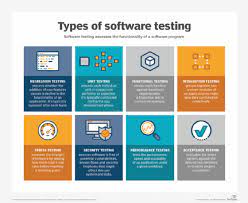
Lorem ipsum dolor sit amet, consectetur adipisicing elit. Amet nesciunt qui sit velit delectus voluptates, repellat ipsum culpa id deleniti. Rerum debitis facilis accusantium neque numquam mollitia modi quasi distinctio.
Necessitatibus nihil impedit! Ex nisi eveniet, dolor aliquid consequuntur repudiandae.
Magnam in repellat enim harum omnis aperiam! Explicabo illo, commodi, dolor blanditiis cupiditate harum nisi vero accusamus laudantium voluptatibus dolores quae obcaecati.

Programming with Mosh HTML Tutorial for Beginners: HTML Crash Course
freeCodeCamp.org Learn HTML – Full Tutorial for Beginners (2022)
codecademy
Learn HTML tart at the beginning by learning HTML basics — an important foundation for building and editing web pages.
mozilla
HTML: HyperText Markup Language HTML (HyperText Markup Language) is the most basic building block of the Web. It defines the meaning and structure of web content. Other technologies besides HTML are generally used to describe a web page's appearance/presentation (CSS) or functionality/behavior (JavaScript).
tutorialspoint
HTML Tutorial HTML stands for Hyper Text Markup Language, which is the most widely used language on Web to develop web pages. HTML was created by Berners-Lee in late 1991 but "HTML 2.0" was the first standard HTML specification which was published in 1995. HTML 4.01 was a major version of HTML and it was published in late 1999. Though HTML 4.01 version is widely used but currently we are having HTML-5 version which is an extension to HTML 4.01, and this version was published in 2012.
web.dev
Learn HTML This HTML course for web developers provides a solid overview for developers, from novice to expert level HTML. If you're completely new to HTML, you will learn how to build structurally sound content. If you've been building websites for years, this course may fill in gaps in knowledge that you didn't even know you had.
w3schools
Easy Learning with HTML "Try it Yourself" With our "Try it Yourself" editor, you can edit the HTML code and view the result:
geeksforgeeks
HTML stands for HyperText Markup Language. It is used to design web pages using the markup language. HTML is the combination of Hypertext and Markup language. Hypertext defines the link between the web pages and markup language defines the text document within the tag that define the structure of web pages.
theserverside
HTML | HyperText Markup Language. is a text-based approach to describing how content contained within an HTML file is structured. This markup tells a web browser how to display text, images and other forms of multimedia on a webpage.
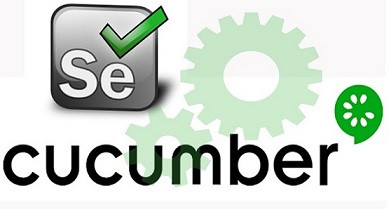
Lorem ipsum dolor sit amet, consectetur adipisicing elit. Amet nesciunt qui sit velit delectus voluptates, repellat ipsum culpa id deleniti. Rerum debitis facilis accusantium neque numquam mollitia modi quasi distinctio.
Necessitatibus nihil impedit! Ex nisi eveniet, dolor aliquid consequuntur repudiandae.
Magnam in repellat enim harum omnis aperiam! Explicabo illo, commodi, dolor blanditiis cupiditate harum nisi vero accusamus laudantium voluptatibus dolores quae obcaecati.

Programming with Mosh HTML Tutorial for Beginners: HTML Crash Course
freeCodeCamp.org Learn HTML – Full Tutorial for Beginners (2022)
codecademy
Learn HTML tart at the beginning by learning HTML basics — an important foundation for building and editing web pages.
mozilla
HTML: HyperText Markup Language HTML (HyperText Markup Language) is the most basic building block of the Web. It defines the meaning and structure of web content. Other technologies besides HTML are generally used to describe a web page's appearance/presentation (CSS) or functionality/behavior (JavaScript).
tutorialspoint
HTML Tutorial HTML stands for Hyper Text Markup Language, which is the most widely used language on Web to develop web pages. HTML was created by Berners-Lee in late 1991 but "HTML 2.0" was the first standard HTML specification which was published in 1995. HTML 4.01 was a major version of HTML and it was published in late 1999. Though HTML 4.01 version is widely used but currently we are having HTML-5 version which is an extension to HTML 4.01, and this version was published in 2012.
web.dev
Learn HTML This HTML course for web developers provides a solid overview for developers, from novice to expert level HTML. If you're completely new to HTML, you will learn how to build structurally sound content. If you've been building websites for years, this course may fill in gaps in knowledge that you didn't even know you had.
w3schools
Easy Learning with HTML "Try it Yourself" With our "Try it Yourself" editor, you can edit the HTML code and view the result:
geeksforgeeks
HTML stands for HyperText Markup Language. It is used to design web pages using the markup language. HTML is the combination of Hypertext and Markup language. Hypertext defines the link between the web pages and markup language defines the text document within the tag that define the structure of web pages.
theserverside
HTML | HyperText Markup Language. is a text-based approach to describing how content contained within an HTML file is structured. This markup tells a web browser how to display text, images and other forms of multimedia on a webpage.
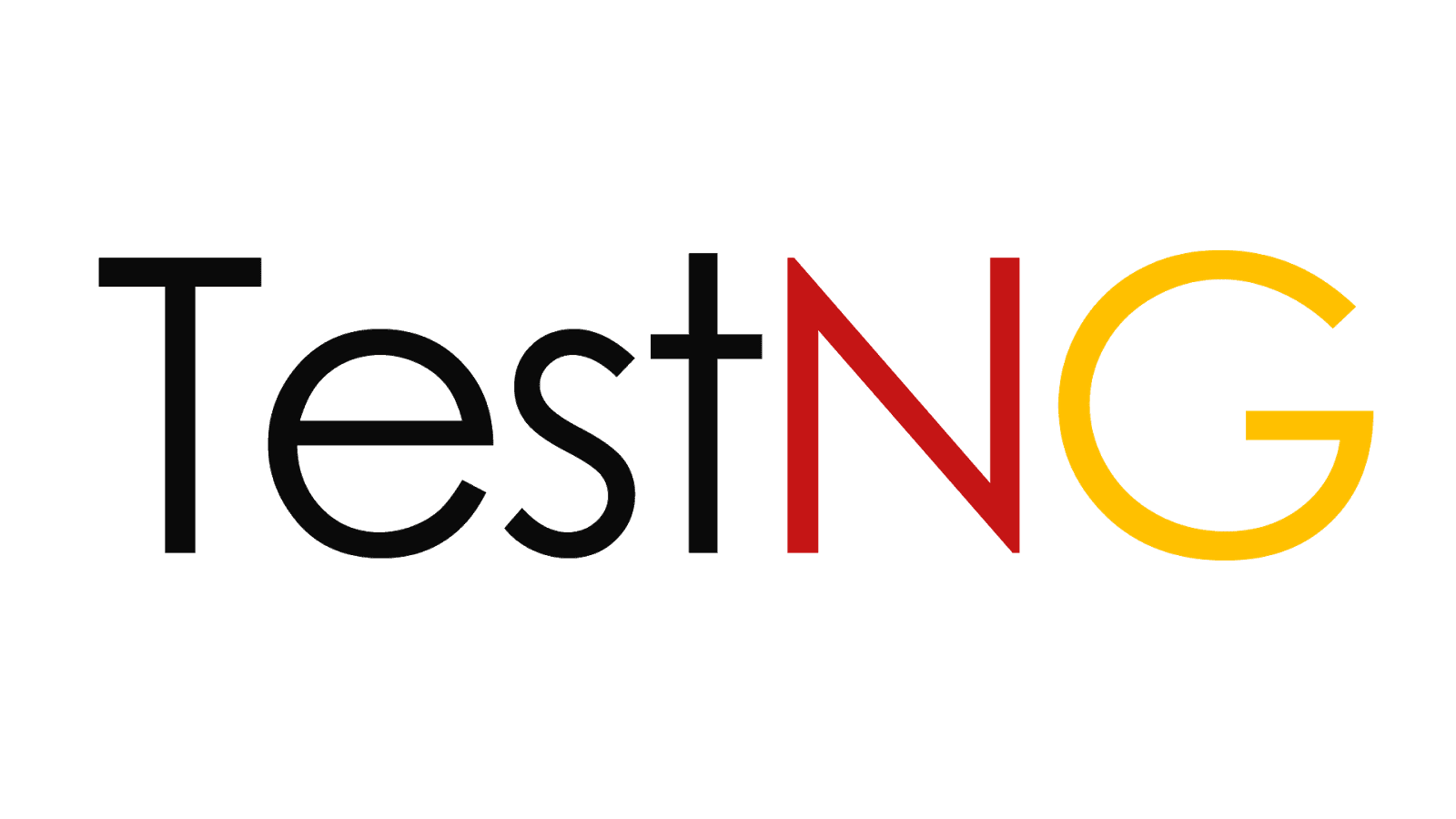
Lorem ipsum dolor sit amet, consectetur adipisicing elit. Impedit excepturi laborum enim, vitae ipsam atque eum, ad iusto consequuntur voluptas, esse doloribus. Perferendis porro quisquam vitae exercitationem aliquid, minus eos laborum repudiandae, cumque debitis iusto omnis praesentium? Laborum placeat sit adipisci illum tempore maxime, esse qui quae? Molestias excepturi corporis similique doloribus. Esse vitae earum architecto nulla non dolores illum at perspiciatis quod, et deleniti cupiditate reiciendis harum facere, delectus eum commodi soluta distinctio sit repudiandae possimus sunt. Ipsum, rem.

Programming with Mosh HTML Tutorial for Beginners: HTML Crash Course
freeCodeCamp.org Learn HTML – Full Tutorial for Beginners (2022)
codecademy
Learn HTML tart at the beginning by learning HTML basics — an important foundation for building and editing web pages.
mozilla
HTML: HyperText Markup Language HTML (HyperText Markup Language) is the most basic building block of the Web. It defines the meaning and structure of web content. Other technologies besides HTML are generally used to describe a web page's appearance/presentation (CSS) or functionality/behavior (JavaScript).
tutorialspoint
HTML Tutorial HTML stands for Hyper Text Markup Language, which is the most widely used language on Web to develop web pages. HTML was created by Berners-Lee in late 1991 but "HTML 2.0" was the first standard HTML specification which was published in 1995. HTML 4.01 was a major version of HTML and it was published in late 1999. Though HTML 4.01 version is widely used but currently we are having HTML-5 version which is an extension to HTML 4.01, and this version was published in 2012.
web.dev
Learn HTML This HTML course for web developers provides a solid overview for developers, from novice to expert level HTML. If you're completely new to HTML, you will learn how to build structurally sound content. If you've been building websites for years, this course may fill in gaps in knowledge that you didn't even know you had.
w3schools
Easy Learning with HTML "Try it Yourself" With our "Try it Yourself" editor, you can edit the HTML code and view the result:
geeksforgeeks
HTML stands for HyperText Markup Language. It is used to design web pages using the markup language. HTML is the combination of Hypertext and Markup language. Hypertext defines the link between the web pages and markup language defines the text document within the tag that define the structure of web pages.
theserverside
HTML | HyperText Markup Language. is a text-based approach to describing how content contained within an HTML file is structured. This markup tells a web browser how to display text, images and other forms of multimedia on a webpage.

Lorem ipsum dolor sit amet, consectetur adipisicing elit. Amet nesciunt qui sit velit delectus voluptates, repellat ipsum culpa id deleniti. Rerum debitis facilis accusantium neque numquam mollitia modi quasi distinctio.
Necessitatibus nihil impedit! Ex nisi eveniet, dolor aliquid consequuntur repudiandae.
Magnam in repellat enim harum omnis aperiam! Explicabo illo, commodi, dolor blanditiis cupiditate harum nisi vero accusamus laudantium voluptatibus dolores quae obcaecati.

Programming with Mosh HTML Tutorial for Beginners: HTML Crash Course
freeCodeCamp.org Learn HTML – Full Tutorial for Beginners (2022)
codecademy
Learn HTML tart at the beginning by learning HTML basics — an important foundation for building and editing web pages.
mozilla
HTML: HyperText Markup Language HTML (HyperText Markup Language) is the most basic building block of the Web. It defines the meaning and structure of web content. Other technologies besides HTML are generally used to describe a web page's appearance/presentation (CSS) or functionality/behavior (JavaScript).
tutorialspoint
HTML Tutorial HTML stands for Hyper Text Markup Language, which is the most widely used language on Web to develop web pages. HTML was created by Berners-Lee in late 1991 but "HTML 2.0" was the first standard HTML specification which was published in 1995. HTML 4.01 was a major version of HTML and it was published in late 1999. Though HTML 4.01 version is widely used but currently we are having HTML-5 version which is an extension to HTML 4.01, and this version was published in 2012.
web.dev
Learn HTML This HTML course for web developers provides a solid overview for developers, from novice to expert level HTML. If you're completely new to HTML, you will learn how to build structurally sound content. If you've been building websites for years, this course may fill in gaps in knowledge that you didn't even know you had.
w3schools
Easy Learning with HTML "Try it Yourself" With our "Try it Yourself" editor, you can edit the HTML code and view the result:
geeksforgeeks
HTML stands for HyperText Markup Language. It is used to design web pages using the markup language. HTML is the combination of Hypertext and Markup language. Hypertext defines the link between the web pages and markup language defines the text document within the tag that define the structure of web pages.
theserverside
HTML | HyperText Markup Language. is a text-based approach to describing how content contained within an HTML file is structured. This markup tells a web browser how to display text, images and other forms of multimedia on a webpage.

Lorem ipsum dolor sit amet, consectetur adipisicing elit. Impedit excepturi laborum enim, vitae ipsam atque eum, ad iusto consequuntur voluptas, esse doloribus. Perferendis porro quisquam vitae exercitationem aliquid, minus eos laborum repudiandae, cumque debitis iusto omnis praesentium? Laborum placeat sit adipisci illum tempore maxime, esse qui quae? Molestias excepturi corporis similique doloribus. Esse vitae earum architecto nulla non dolores illum at perspiciatis quod, et deleniti cupiditate reiciendis harum facere, delectus eum commodi soluta distinctio sit repudiandae possimus sunt. Ipsum, rem.

Programming with Mosh HTML Tutorial for Beginners: HTML Crash Course
freeCodeCamp.org Learn HTML – Full Tutorial for Beginners (2022)
codecademy
Learn HTML tart at the beginning by learning HTML basics — an important foundation for building and editing web pages.
mozilla
HTML: HyperText Markup Language HTML (HyperText Markup Language) is the most basic building block of the Web. It defines the meaning and structure of web content. Other technologies besides HTML are generally used to describe a web page's appearance/presentation (CSS) or functionality/behavior (JavaScript).
tutorialspoint
HTML Tutorial HTML stands for Hyper Text Markup Language, which is the most widely used language on Web to develop web pages. HTML was created by Berners-Lee in late 1991 but "HTML 2.0" was the first standard HTML specification which was published in 1995. HTML 4.01 was a major version of HTML and it was published in late 1999. Though HTML 4.01 version is widely used but currently we are having HTML-5 version which is an extension to HTML 4.01, and this version was published in 2012.
web.dev
Learn HTML This HTML course for web developers provides a solid overview for developers, from novice to expert level HTML. If you're completely new to HTML, you will learn how to build structurally sound content. If you've been building websites for years, this course may fill in gaps in knowledge that you didn't even know you had.
w3schools
Easy Learning with HTML "Try it Yourself" With our "Try it Yourself" editor, you can edit the HTML code and view the result:
geeksforgeeks
HTML stands for HyperText Markup Language. It is used to design web pages using the markup language. HTML is the combination of Hypertext and Markup language. Hypertext defines the link between the web pages and markup language defines the text document within the tag that define the structure of web pages.
theserverside
HTML | HyperText Markup Language. is a text-based approach to describing how content contained within an HTML file is structured. This markup tells a web browser how to display text, images and other forms of multimedia on a webpage.
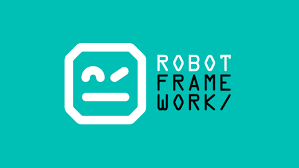
Lorem ipsum dolor sit amet, consectetur adipisicing elit. Amet nesciunt qui sit velit delectus voluptates, repellat ipsum culpa id deleniti. Rerum debitis facilis accusantium neque numquam mollitia modi quasi distinctio.
Necessitatibus nihil impedit! Ex nisi eveniet, dolor aliquid consequuntur repudiandae.
Magnam in repellat enim harum omnis aperiam! Explicabo illo, commodi, dolor blanditiis cupiditate harum nisi vero accusamus laudantium voluptatibus dolores quae obcaecati.

Programming with Mosh HTML Tutorial for Beginners: HTML Crash Course
freeCodeCamp.org Learn HTML – Full Tutorial for Beginners (2022)
codecademy
Learn HTML tart at the beginning by learning HTML basics — an important foundation for building and editing web pages.
mozilla
HTML: HyperText Markup Language HTML (HyperText Markup Language) is the most basic building block of the Web. It defines the meaning and structure of web content. Other technologies besides HTML are generally used to describe a web page's appearance/presentation (CSS) or functionality/behavior (JavaScript).
tutorialspoint
HTML Tutorial HTML stands for Hyper Text Markup Language, which is the most widely used language on Web to develop web pages. HTML was created by Berners-Lee in late 1991 but "HTML 2.0" was the first standard HTML specification which was published in 1995. HTML 4.01 was a major version of HTML and it was published in late 1999. Though HTML 4.01 version is widely used but currently we are having HTML-5 version which is an extension to HTML 4.01, and this version was published in 2012.
web.dev
Learn HTML This HTML course for web developers provides a solid overview for developers, from novice to expert level HTML. If you're completely new to HTML, you will learn how to build structurally sound content. If you've been building websites for years, this course may fill in gaps in knowledge that you didn't even know you had.
w3schools
Easy Learning with HTML "Try it Yourself" With our "Try it Yourself" editor, you can edit the HTML code and view the result:
geeksforgeeks
HTML stands for HyperText Markup Language. It is used to design web pages using the markup language. HTML is the combination of Hypertext and Markup language. Hypertext defines the link between the web pages and markup language defines the text document within the tag that define the structure of web pages.
theserverside
HTML | HyperText Markup Language. is a text-based approach to describing how content contained within an HTML file is structured. This markup tells a web browser how to display text, images and other forms of multimedia on a webpage.

Lorem ipsum dolor sit amet, consectetur adipisicing elit. Amet nesciunt qui sit velit delectus voluptates, repellat ipsum culpa id deleniti. Rerum debitis facilis accusantium neque numquam mollitia modi quasi distinctio.
Necessitatibus nihil impedit! Ex nisi eveniet, dolor aliquid consequuntur repudiandae.
Magnam in repellat enim harum omnis aperiam! Explicabo illo, commodi, dolor blanditiis cupiditate harum nisi vero accusamus laudantium voluptatibus dolores quae obcaecati.

Programming with Mosh HTML Tutorial for Beginners: HTML Crash Course
freeCodeCamp.org Learn HTML – Full Tutorial for Beginners (2022)
codecademy
Learn HTML tart at the beginning by learning HTML basics — an important foundation for building and editing web pages.
mozilla
HTML: HyperText Markup Language HTML (HyperText Markup Language) is the most basic building block of the Web. It defines the meaning and structure of web content. Other technologies besides HTML are generally used to describe a web page's appearance/presentation (CSS) or functionality/behavior (JavaScript).
tutorialspoint
HTML Tutorial HTML stands for Hyper Text Markup Language, which is the most widely used language on Web to develop web pages. HTML was created by Berners-Lee in late 1991 but "HTML 2.0" was the first standard HTML specification which was published in 1995. HTML 4.01 was a major version of HTML and it was published in late 1999. Though HTML 4.01 version is widely used but currently we are having HTML-5 version which is an extension to HTML 4.01, and this version was published in 2012.
web.dev
Learn HTML This HTML course for web developers provides a solid overview for developers, from novice to expert level HTML. If you're completely new to HTML, you will learn how to build structurally sound content. If you've been building websites for years, this course may fill in gaps in knowledge that you didn't even know you had.
w3schools
Easy Learning with HTML "Try it Yourself" With our "Try it Yourself" editor, you can edit the HTML code and view the result:
geeksforgeeks
HTML stands for HyperText Markup Language. It is used to design web pages using the markup language. HTML is the combination of Hypertext and Markup language. Hypertext defines the link between the web pages and markup language defines the text document within the tag that define the structure of web pages.
theserverside
HTML | HyperText Markup Language. is a text-based approach to describing how content contained within an HTML file is structured. This markup tells a web browser how to display text, images and other forms of multimedia on a webpage.

Lorem ipsum dolor sit amet, consectetur adipisicing elit. Impedit excepturi laborum enim, vitae ipsam atque eum, ad iusto consequuntur voluptas, esse doloribus. Perferendis porro quisquam vitae exercitationem aliquid, minus eos laborum repudiandae, cumque debitis iusto omnis praesentium? Laborum placeat sit adipisci illum tempore maxime, esse qui quae? Molestias excepturi corporis similique doloribus. Esse vitae earum architecto nulla non dolores illum at perspiciatis quod, et deleniti cupiditate reiciendis harum facere, delectus eum commodi soluta distinctio sit repudiandae possimus sunt. Ipsum, rem.

Programming with Mosh HTML Tutorial for Beginners: HTML Crash Course
freeCodeCamp.org Learn HTML – Full Tutorial for Beginners (2022)
codecademy
Learn HTML tart at the beginning by learning HTML basics — an important foundation for building and editing web pages.
mozilla
HTML: HyperText Markup Language HTML (HyperText Markup Language) is the most basic building block of the Web. It defines the meaning and structure of web content. Other technologies besides HTML are generally used to describe a web page's appearance/presentation (CSS) or functionality/behavior (JavaScript).
tutorialspoint
HTML Tutorial HTML stands for Hyper Text Markup Language, which is the most widely used language on Web to develop web pages. HTML was created by Berners-Lee in late 1991 but "HTML 2.0" was the first standard HTML specification which was published in 1995. HTML 4.01 was a major version of HTML and it was published in late 1999. Though HTML 4.01 version is widely used but currently we are having HTML-5 version which is an extension to HTML 4.01, and this version was published in 2012.
web.dev
Learn HTML This HTML course for web developers provides a solid overview for developers, from novice to expert level HTML. If you're completely new to HTML, you will learn how to build structurally sound content. If you've been building websites for years, this course may fill in gaps in knowledge that you didn't even know you had.
w3schools
Easy Learning with HTML "Try it Yourself" With our "Try it Yourself" editor, you can edit the HTML code and view the result:
geeksforgeeks
HTML stands for HyperText Markup Language. It is used to design web pages using the markup language. HTML is the combination of Hypertext and Markup language. Hypertext defines the link between the web pages and markup language defines the text document within the tag that define the structure of web pages.
theserverside
HTML | HyperText Markup Language. is a text-based approach to describing how content contained within an HTML file is structured. This markup tells a web browser how to display text, images and other forms of multimedia on a webpage.
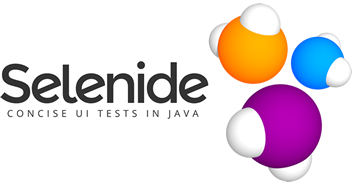
Lorem ipsum dolor sit amet, consectetur adipisicing elit. Amet nesciunt qui sit velit delectus voluptates, repellat ipsum culpa id deleniti. Rerum debitis facilis accusantium neque numquam mollitia modi quasi distinctio.
Necessitatibus nihil impedit! Ex nisi eveniet, dolor aliquid consequuntur repudiandae.
Magnam in repellat enim harum omnis aperiam! Explicabo illo, commodi, dolor blanditiis cupiditate harum nisi vero accusamus laudantium voluptatibus dolores quae obcaecati.

Programming with Mosh HTML Tutorial for Beginners: HTML Crash Course
freeCodeCamp.org Learn HTML – Full Tutorial for Beginners (2022)
codecademy
Learn HTML tart at the beginning by learning HTML basics — an important foundation for building and editing web pages.
mozilla
HTML: HyperText Markup Language HTML (HyperText Markup Language) is the most basic building block of the Web. It defines the meaning and structure of web content. Other technologies besides HTML are generally used to describe a web page's appearance/presentation (CSS) or functionality/behavior (JavaScript).
tutorialspoint
HTML Tutorial HTML stands for Hyper Text Markup Language, which is the most widely used language on Web to develop web pages. HTML was created by Berners-Lee in late 1991 but "HTML 2.0" was the first standard HTML specification which was published in 1995. HTML 4.01 was a major version of HTML and it was published in late 1999. Though HTML 4.01 version is widely used but currently we are having HTML-5 version which is an extension to HTML 4.01, and this version was published in 2012.
web.dev
Learn HTML This HTML course for web developers provides a solid overview for developers, from novice to expert level HTML. If you're completely new to HTML, you will learn how to build structurally sound content. If you've been building websites for years, this course may fill in gaps in knowledge that you didn't even know you had.
w3schools
Easy Learning with HTML "Try it Yourself" With our "Try it Yourself" editor, you can edit the HTML code and view the result:
geeksforgeeks
HTML stands for HyperText Markup Language. It is used to design web pages using the markup language. HTML is the combination of Hypertext and Markup language. Hypertext defines the link between the web pages and markup language defines the text document within the tag that define the structure of web pages.
theserverside
HTML | HyperText Markup Language. is a text-based approach to describing how content contained within an HTML file is structured. This markup tells a web browser how to display text, images and other forms of multimedia on a webpage.
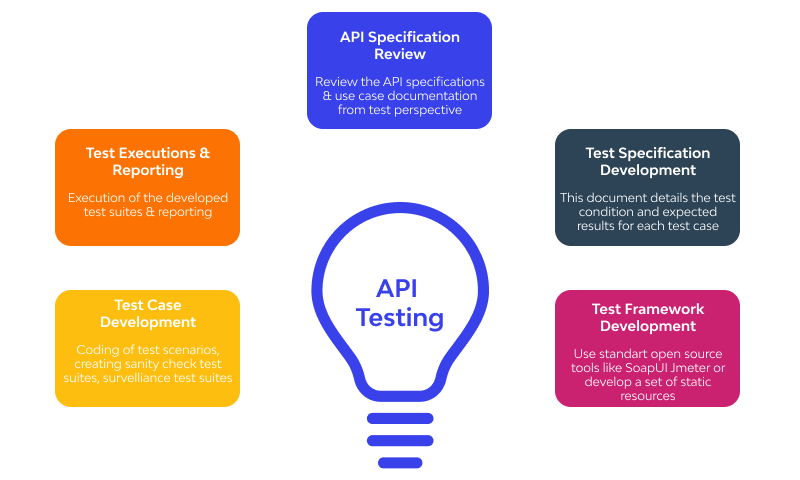
Lorem ipsum dolor sit amet, consectetur adipisicing elit. Impedit excepturi laborum enim, vitae ipsam atque eum, ad iusto consequuntur voluptas, esse doloribus. Perferendis porro quisquam vitae exercitationem aliquid, minus eos laborum repudiandae, cumque debitis iusto omnis praesentium? Laborum placeat sit adipisci illum tempore maxime, esse qui quae? Molestias excepturi corporis similique doloribus. Esse vitae earum architecto nulla non dolores illum at perspiciatis quod, et deleniti cupiditate reiciendis harum facere, delectus eum commodi soluta distinctio sit repudiandae possimus sunt. Ipsum, rem.

Programming with Mosh HTML Tutorial for Beginners: HTML Crash Course
freeCodeCamp.org Learn HTML – Full Tutorial for Beginners (2022)
codecademy
Learn HTML tart at the beginning by learning HTML basics — an important foundation for building and editing web pages.
mozilla
HTML: HyperText Markup Language HTML (HyperText Markup Language) is the most basic building block of the Web. It defines the meaning and structure of web content. Other technologies besides HTML are generally used to describe a web page's appearance/presentation (CSS) or functionality/behavior (JavaScript).
tutorialspoint
HTML Tutorial HTML stands for Hyper Text Markup Language, which is the most widely used language on Web to develop web pages. HTML was created by Berners-Lee in late 1991 but "HTML 2.0" was the first standard HTML specification which was published in 1995. HTML 4.01 was a major version of HTML and it was published in late 1999. Though HTML 4.01 version is widely used but currently we are having HTML-5 version which is an extension to HTML 4.01, and this version was published in 2012.
web.dev
Learn HTML This HTML course for web developers provides a solid overview for developers, from novice to expert level HTML. If you're completely new to HTML, you will learn how to build structurally sound content. If you've been building websites for years, this course may fill in gaps in knowledge that you didn't even know you had.
w3schools
Easy Learning with HTML "Try it Yourself" With our "Try it Yourself" editor, you can edit the HTML code and view the result:
geeksforgeeks
HTML stands for HyperText Markup Language. It is used to design web pages using the markup language. HTML is the combination of Hypertext and Markup language. Hypertext defines the link between the web pages and markup language defines the text document within the tag that define the structure of web pages.
theserverside
HTML | HyperText Markup Language. is a text-based approach to describing how content contained within an HTML file is structured. This markup tells a web browser how to display text, images and other forms of multimedia on a webpage.

Lorem ipsum dolor sit amet, consectetur adipisicing elit. Amet nesciunt qui sit velit delectus voluptates, repellat ipsum culpa id deleniti. Rerum debitis facilis accusantium neque numquam mollitia modi quasi distinctio.
Necessitatibus nihil impedit! Ex nisi eveniet, dolor aliquid consequuntur repudiandae.
Magnam in repellat enim harum omnis aperiam! Explicabo illo, commodi, dolor blanditiis cupiditate harum nisi vero accusamus laudantium voluptatibus dolores quae obcaecati.

Programming with Mosh HTML Tutorial for Beginners: HTML Crash Course
freeCodeCamp.org Learn HTML – Full Tutorial for Beginners (2022)
codecademy
Learn HTML tart at the beginning by learning HTML basics — an important foundation for building and editing web pages.
mozilla
HTML: HyperText Markup Language HTML (HyperText Markup Language) is the most basic building block of the Web. It defines the meaning and structure of web content. Other technologies besides HTML are generally used to describe a web page's appearance/presentation (CSS) or functionality/behavior (JavaScript).
tutorialspoint
HTML Tutorial HTML stands for Hyper Text Markup Language, which is the most widely used language on Web to develop web pages. HTML was created by Berners-Lee in late 1991 but "HTML 2.0" was the first standard HTML specification which was published in 1995. HTML 4.01 was a major version of HTML and it was published in late 1999. Though HTML 4.01 version is widely used but currently we are having HTML-5 version which is an extension to HTML 4.01, and this version was published in 2012.
web.dev
Learn HTML This HTML course for web developers provides a solid overview for developers, from novice to expert level HTML. If you're completely new to HTML, you will learn how to build structurally sound content. If you've been building websites for years, this course may fill in gaps in knowledge that you didn't even know you had.
w3schools
Easy Learning with HTML "Try it Yourself" With our "Try it Yourself" editor, you can edit the HTML code and view the result:
geeksforgeeks
HTML stands for HyperText Markup Language. It is used to design web pages using the markup language. HTML is the combination of Hypertext and Markup language. Hypertext defines the link between the web pages and markup language defines the text document within the tag that define the structure of web pages.
theserverside
HTML | HyperText Markup Language. is a text-based approach to describing how content contained within an HTML file is structured. This markup tells a web browser how to display text, images and other forms of multimedia on a webpage.

Lorem ipsum dolor sit amet, consectetur adipisicing elit. Impedit excepturi laborum enim, vitae ipsam atque eum, ad iusto consequuntur voluptas, esse doloribus. Perferendis porro quisquam vitae exercitationem aliquid, minus eos laborum repudiandae, cumque debitis iusto omnis praesentium? Laborum placeat sit adipisci illum tempore maxime, esse qui quae? Molestias excepturi corporis similique doloribus. Esse vitae earum architecto nulla non dolores illum at perspiciatis quod, et deleniti cupiditate reiciendis harum facere, delectus eum commodi soluta distinctio sit repudiandae possimus sunt. Ipsum, rem.

Programming with Mosh HTML Tutorial for Beginners: HTML Crash Course
freeCodeCamp.org Learn HTML – Full Tutorial for Beginners (2022)
codecademy
Learn HTML tart at the beginning by learning HTML basics — an important foundation for building and editing web pages.
mozilla
HTML: HyperText Markup Language HTML (HyperText Markup Language) is the most basic building block of the Web. It defines the meaning and structure of web content. Other technologies besides HTML are generally used to describe a web page's appearance/presentation (CSS) or functionality/behavior (JavaScript).
tutorialspoint
HTML Tutorial HTML stands for Hyper Text Markup Language, which is the most widely used language on Web to develop web pages. HTML was created by Berners-Lee in late 1991 but "HTML 2.0" was the first standard HTML specification which was published in 1995. HTML 4.01 was a major version of HTML and it was published in late 1999. Though HTML 4.01 version is widely used but currently we are having HTML-5 version which is an extension to HTML 4.01, and this version was published in 2012.
web.dev
Learn HTML This HTML course for web developers provides a solid overview for developers, from novice to expert level HTML. If you're completely new to HTML, you will learn how to build structurally sound content. If you've been building websites for years, this course may fill in gaps in knowledge that you didn't even know you had.
w3schools
Easy Learning with HTML "Try it Yourself" With our "Try it Yourself" editor, you can edit the HTML code and view the result:
geeksforgeeks
HTML stands for HyperText Markup Language. It is used to design web pages using the markup language. HTML is the combination of Hypertext and Markup language. Hypertext defines the link between the web pages and markup language defines the text document within the tag that define the structure of web pages.
theserverside
HTML | HyperText Markup Language. is a text-based approach to describing how content contained within an HTML file is structured. This markup tells a web browser how to display text, images and other forms of multimedia on a webpage.
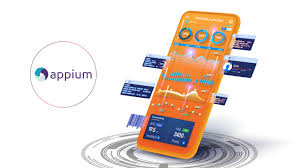
Lorem ipsum dolor sit amet, consectetur adipisicing elit. Impedit excepturi laborum enim, vitae ipsam atque eum, ad iusto consequuntur voluptas, esse doloribus. Perferendis porro quisquam vitae exercitationem aliquid, minus eos laborum repudiandae, cumque debitis iusto omnis praesentium? Laborum placeat sit adipisci illum tempore maxime, esse qui quae? Molestias excepturi corporis similique doloribus. Esse vitae earum architecto nulla non dolores illum at perspiciatis quod, et deleniti cupiditate reiciendis harum facere, delectus eum commodi soluta distinctio sit repudiandae possimus sunt. Ipsum, rem.

Programming with Mosh HTML Tutorial for Beginners: HTML Crash Course
freeCodeCamp.org Learn HTML – Full Tutorial for Beginners (2022)
codecademy
Learn HTML tart at the beginning by learning HTML basics — an important foundation for building and editing web pages.
mozilla
HTML: HyperText Markup Language HTML (HyperText Markup Language) is the most basic building block of the Web. It defines the meaning and structure of web content. Other technologies besides HTML are generally used to describe a web page's appearance/presentation (CSS) or functionality/behavior (JavaScript).
tutorialspoint
HTML Tutorial HTML stands for Hyper Text Markup Language, which is the most widely used language on Web to develop web pages. HTML was created by Berners-Lee in late 1991 but "HTML 2.0" was the first standard HTML specification which was published in 1995. HTML 4.01 was a major version of HTML and it was published in late 1999. Though HTML 4.01 version is widely used but currently we are having HTML-5 version which is an extension to HTML 4.01, and this version was published in 2012.
web.dev
Learn HTML This HTML course for web developers provides a solid overview for developers, from novice to expert level HTML. If you're completely new to HTML, you will learn how to build structurally sound content. If you've been building websites for years, this course may fill in gaps in knowledge that you didn't even know you had.
w3schools
Easy Learning with HTML "Try it Yourself" With our "Try it Yourself" editor, you can edit the HTML code and view the result:
geeksforgeeks
HTML stands for HyperText Markup Language. It is used to design web pages using the markup language. HTML is the combination of Hypertext and Markup language. Hypertext defines the link between the web pages and markup language defines the text document within the tag that define the structure of web pages.
theserverside
HTML | HyperText Markup Language. is a text-based approach to describing how content contained within an HTML file is structured. This markup tells a web browser how to display text, images and other forms of multimedia on a webpage.

Lorem ipsum dolor sit amet, consectetur adipisicing elit. Amet nesciunt qui sit velit delectus voluptates, repellat ipsum culpa id deleniti. Rerum debitis facilis accusantium neque numquam mollitia modi quasi distinctio.
Necessitatibus nihil impedit! Ex nisi eveniet, dolor aliquid consequuntur repudiandae.
Magnam in repellat enim harum omnis aperiam! Explicabo illo, commodi, dolor blanditiis cupiditate harum nisi vero accusamus laudantium voluptatibus dolores quae obcaecati.

Programming with Mosh HTML Tutorial for Beginners: HTML Crash Course
freeCodeCamp.org Learn HTML – Full Tutorial for Beginners (2022)
codecademy
Learn HTML tart at the beginning by learning HTML basics — an important foundation for building and editing web pages.
mozilla
HTML: HyperText Markup Language HTML (HyperText Markup Language) is the most basic building block of the Web. It defines the meaning and structure of web content. Other technologies besides HTML are generally used to describe a web page's appearance/presentation (CSS) or functionality/behavior (JavaScript).
tutorialspoint
HTML Tutorial HTML stands for Hyper Text Markup Language, which is the most widely used language on Web to develop web pages. HTML was created by Berners-Lee in late 1991 but "HTML 2.0" was the first standard HTML specification which was published in 1995. HTML 4.01 was a major version of HTML and it was published in late 1999. Though HTML 4.01 version is widely used but currently we are having HTML-5 version which is an extension to HTML 4.01, and this version was published in 2012.
web.dev
Learn HTML This HTML course for web developers provides a solid overview for developers, from novice to expert level HTML. If you're completely new to HTML, you will learn how to build structurally sound content. If you've been building websites for years, this course may fill in gaps in knowledge that you didn't even know you had.
w3schools
Easy Learning with HTML "Try it Yourself" With our "Try it Yourself" editor, you can edit the HTML code and view the result:
geeksforgeeks
HTML stands for HyperText Markup Language. It is used to design web pages using the markup language. HTML is the combination of Hypertext and Markup language. Hypertext defines the link between the web pages and markup language defines the text document within the tag that define the structure of web pages.
theserverside
HTML | HyperText Markup Language. is a text-based approach to describing how content contained within an HTML file is structured. This markup tells a web browser how to display text, images and other forms of multimedia on a webpage.
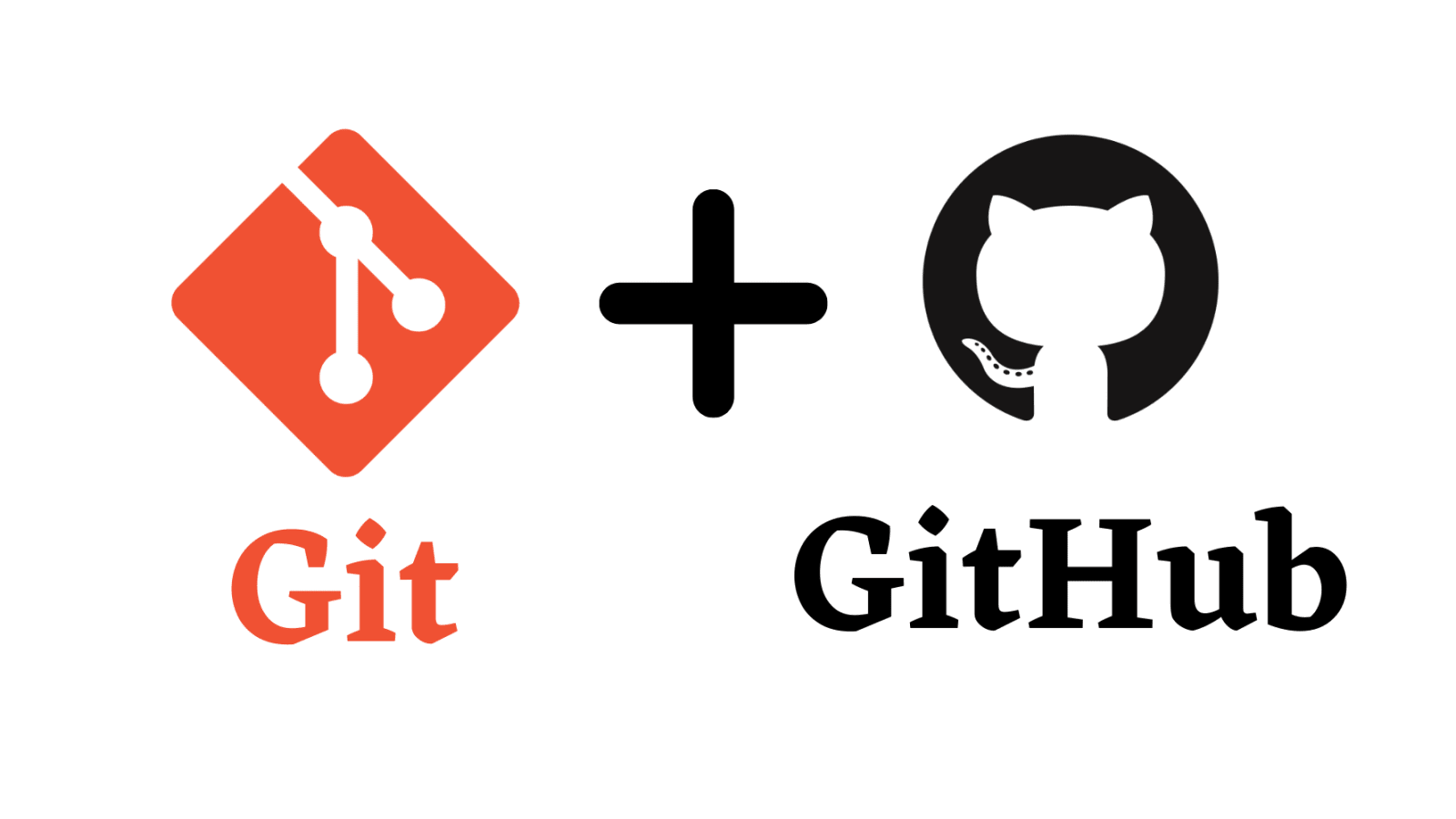
Lorem ipsum dolor sit amet, consectetur adipisicing elit. Impedit excepturi laborum enim, vitae ipsam atque eum, ad iusto consequuntur voluptas, esse doloribus. Perferendis porro quisquam vitae exercitationem aliquid, minus eos laborum repudiandae, cumque debitis iusto omnis praesentium? Laborum placeat sit adipisci illum tempore maxime, esse qui quae? Molestias excepturi corporis similique doloribus. Esse vitae earum architecto nulla non dolores illum at perspiciatis quod, et deleniti cupiditate reiciendis harum facere, delectus eum commodi soluta distinctio sit repudiandae possimus sunt. Ipsum, rem.

Programming with Mosh HTML Tutorial for Beginners: HTML Crash Course
freeCodeCamp.org Learn HTML – Full Tutorial for Beginners (2022)
codecademy
Learn HTML tart at the beginning by learning HTML basics — an important foundation for building and editing web pages.
mozilla
HTML: HyperText Markup Language HTML (HyperText Markup Language) is the most basic building block of the Web. It defines the meaning and structure of web content. Other technologies besides HTML are generally used to describe a web page's appearance/presentation (CSS) or functionality/behavior (JavaScript).
tutorialspoint
HTML Tutorial HTML stands for Hyper Text Markup Language, which is the most widely used language on Web to develop web pages. HTML was created by Berners-Lee in late 1991 but "HTML 2.0" was the first standard HTML specification which was published in 1995. HTML 4.01 was a major version of HTML and it was published in late 1999. Though HTML 4.01 version is widely used but currently we are having HTML-5 version which is an extension to HTML 4.01, and this version was published in 2012.
web.dev
Learn HTML This HTML course for web developers provides a solid overview for developers, from novice to expert level HTML. If you're completely new to HTML, you will learn how to build structurally sound content. If you've been building websites for years, this course may fill in gaps in knowledge that you didn't even know you had.
w3schools
Easy Learning with HTML "Try it Yourself" With our "Try it Yourself" editor, you can edit the HTML code and view the result:
geeksforgeeks
HTML stands for HyperText Markup Language. It is used to design web pages using the markup language. HTML is the combination of Hypertext and Markup language. Hypertext defines the link between the web pages and markup language defines the text document within the tag that define the structure of web pages.
theserverside
HTML | HyperText Markup Language. is a text-based approach to describing how content contained within an HTML file is structured. This markup tells a web browser how to display text, images and other forms of multimedia on a webpage.
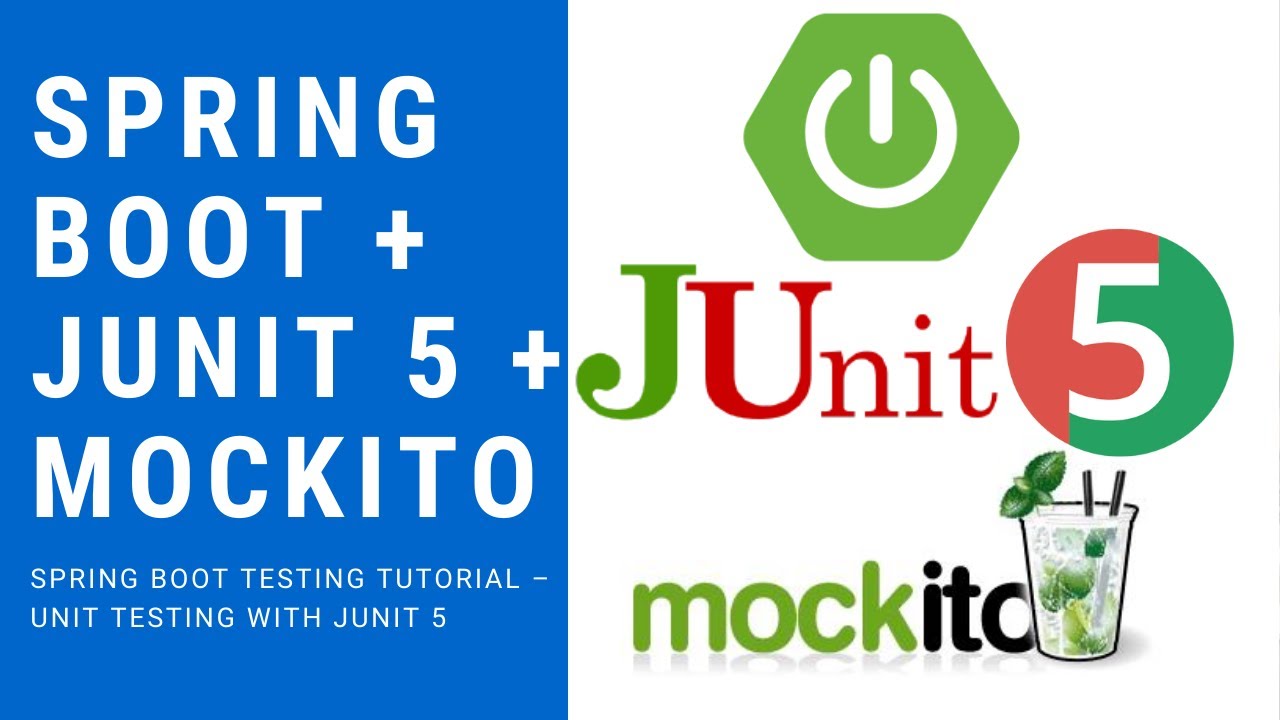
Lorem ipsum dolor sit amet, consectetur adipisicing elit. Amet nesciunt qui sit velit delectus voluptates, repellat ipsum culpa id deleniti. Rerum debitis facilis accusantium neque numquam mollitia modi quasi distinctio.
Necessitatibus nihil impedit! Ex nisi eveniet, dolor aliquid consequuntur repudiandae.
Magnam in repellat enim harum omnis aperiam! Explicabo illo, commodi, dolor blanditiis cupiditate harum nisi vero accusamus laudantium voluptatibus dolores quae obcaecati.

Programming with Mosh HTML Tutorial for Beginners: HTML Crash Course
freeCodeCamp.org Learn HTML – Full Tutorial for Beginners (2022)
codecademy
Learn HTML tart at the beginning by learning HTML basics — an important foundation for building and editing web pages.
mozilla
HTML: HyperText Markup Language HTML (HyperText Markup Language) is the most basic building block of the Web. It defines the meaning and structure of web content. Other technologies besides HTML are generally used to describe a web page's appearance/presentation (CSS) or functionality/behavior (JavaScript).
tutorialspoint
HTML Tutorial HTML stands for Hyper Text Markup Language, which is the most widely used language on Web to develop web pages. HTML was created by Berners-Lee in late 1991 but "HTML 2.0" was the first standard HTML specification which was published in 1995. HTML 4.01 was a major version of HTML and it was published in late 1999. Though HTML 4.01 version is widely used but currently we are having HTML-5 version which is an extension to HTML 4.01, and this version was published in 2012.
web.dev
Learn HTML This HTML course for web developers provides a solid overview for developers, from novice to expert level HTML. If you're completely new to HTML, you will learn how to build structurally sound content. If you've been building websites for years, this course may fill in gaps in knowledge that you didn't even know you had.
w3schools
Easy Learning with HTML "Try it Yourself" With our "Try it Yourself" editor, you can edit the HTML code and view the result:
geeksforgeeks
HTML stands for HyperText Markup Language. It is used to design web pages using the markup language. HTML is the combination of Hypertext and Markup language. Hypertext defines the link between the web pages and markup language defines the text document within the tag that define the structure of web pages.
theserverside
HTML | HyperText Markup Language. is a text-based approach to describing how content contained within an HTML file is structured. This markup tells a web browser how to display text, images and other forms of multimedia on a webpage.

Lorem ipsum dolor sit amet, consectetur adipisicing elit. Impedit excepturi laborum enim, vitae ipsam atque eum, ad iusto consequuntur voluptas, esse doloribus. Perferendis porro quisquam vitae exercitationem aliquid, minus eos laborum repudiandae, cumque debitis iusto omnis praesentium? Laborum placeat sit adipisci illum tempore maxime, esse qui quae? Molestias excepturi corporis similique doloribus. Esse vitae earum architecto nulla non dolores illum at perspiciatis quod, et deleniti cupiditate reiciendis harum facere, delectus eum commodi soluta distinctio sit repudiandae possimus sunt. Ipsum, rem.

Programming with Mosh HTML Tutorial for Beginners: HTML Crash Course
freeCodeCamp.org Learn HTML – Full Tutorial for Beginners (2022)
codecademy
Learn HTML tart at the beginning by learning HTML basics — an important foundation for building and editing web pages.
mozilla
HTML: HyperText Markup Language HTML (HyperText Markup Language) is the most basic building block of the Web. It defines the meaning and structure of web content. Other technologies besides HTML are generally used to describe a web page's appearance/presentation (CSS) or functionality/behavior (JavaScript).
tutorialspoint
HTML Tutorial HTML stands for Hyper Text Markup Language, which is the most widely used language on Web to develop web pages. HTML was created by Berners-Lee in late 1991 but "HTML 2.0" was the first standard HTML specification which was published in 1995. HTML 4.01 was a major version of HTML and it was published in late 1999. Though HTML 4.01 version is widely used but currently we are having HTML-5 version which is an extension to HTML 4.01, and this version was published in 2012.
web.dev
Learn HTML This HTML course for web developers provides a solid overview for developers, from novice to expert level HTML. If you're completely new to HTML, you will learn how to build structurally sound content. If you've been building websites for years, this course may fill in gaps in knowledge that you didn't even know you had.
w3schools
Easy Learning with HTML "Try it Yourself" With our "Try it Yourself" editor, you can edit the HTML code and view the result:
geeksforgeeks
HTML stands for HyperText Markup Language. It is used to design web pages using the markup language. HTML is the combination of Hypertext and Markup language. Hypertext defines the link between the web pages and markup language defines the text document within the tag that define the structure of web pages.
theserverside
HTML | HyperText Markup Language. is a text-based approach to describing how content contained within an HTML file is structured. This markup tells a web browser how to display text, images and other forms of multimedia on a webpage.
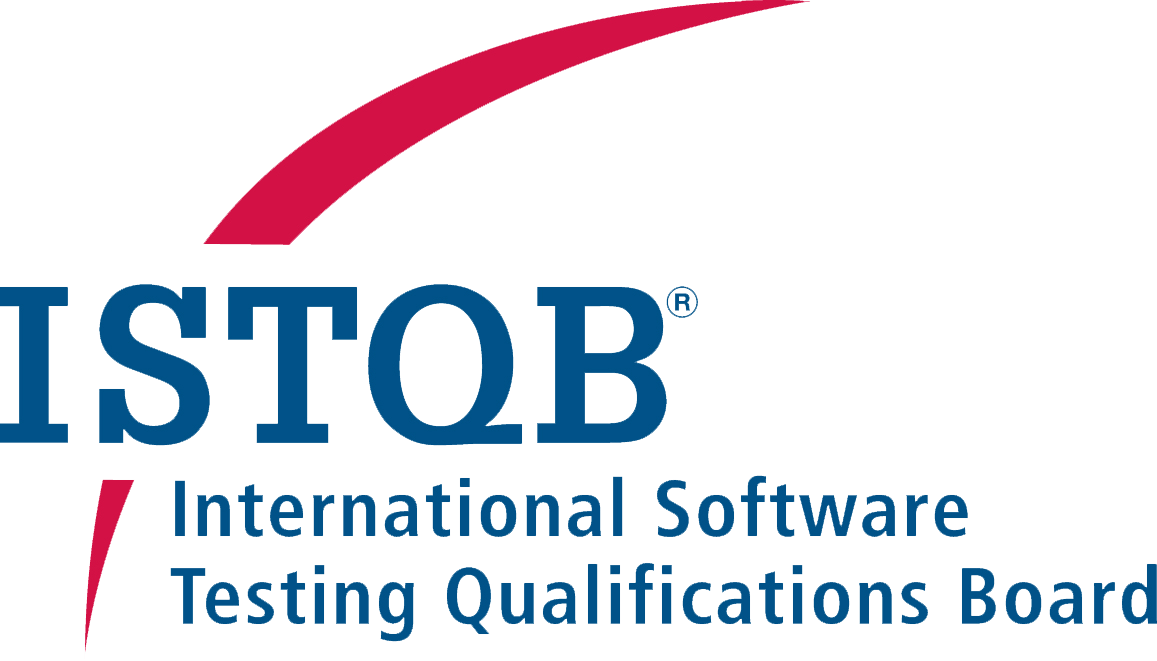
Lorem ipsum dolor sit amet, consectetur adipisicing elit. Amet nesciunt qui sit velit delectus voluptates, repellat ipsum culpa id deleniti. Rerum debitis facilis accusantium neque numquam mollitia modi quasi distinctio.
Necessitatibus nihil impedit! Ex nisi eveniet, dolor aliquid consequuntur repudiandae.
Magnam in repellat enim harum omnis aperiam! Explicabo illo, commodi, dolor blanditiis cupiditate harum nisi vero accusamus laudantium voluptatibus dolores quae obcaecati.

Programming with Mosh HTML Tutorial for Beginners: HTML Crash Course
freeCodeCamp.org Learn HTML – Full Tutorial for Beginners (2022)
codecademy
Learn HTML tart at the beginning by learning HTML basics — an important foundation for building and editing web pages.
mozilla
HTML: HyperText Markup Language HTML (HyperText Markup Language) is the most basic building block of the Web. It defines the meaning and structure of web content. Other technologies besides HTML are generally used to describe a web page's appearance/presentation (CSS) or functionality/behavior (JavaScript).
tutorialspoint
HTML Tutorial HTML stands for Hyper Text Markup Language, which is the most widely used language on Web to develop web pages. HTML was created by Berners-Lee in late 1991 but "HTML 2.0" was the first standard HTML specification which was published in 1995. HTML 4.01 was a major version of HTML and it was published in late 1999. Though HTML 4.01 version is widely used but currently we are having HTML-5 version which is an extension to HTML 4.01, and this version was published in 2012.
web.dev
Learn HTML This HTML course for web developers provides a solid overview for developers, from novice to expert level HTML. If you're completely new to HTML, you will learn how to build structurally sound content. If you've been building websites for years, this course may fill in gaps in knowledge that you didn't even know you had.
w3schools
Easy Learning with HTML "Try it Yourself" With our "Try it Yourself" editor, you can edit the HTML code and view the result:
geeksforgeeks
HTML stands for HyperText Markup Language. It is used to design web pages using the markup language. HTML is the combination of Hypertext and Markup language. Hypertext defines the link between the web pages and markup language defines the text document within the tag that define the structure of web pages.
theserverside
HTML | HyperText Markup Language. is a text-based approach to describing how content contained within an HTML file is structured. This markup tells a web browser how to display text, images and other forms of multimedia on a webpage.
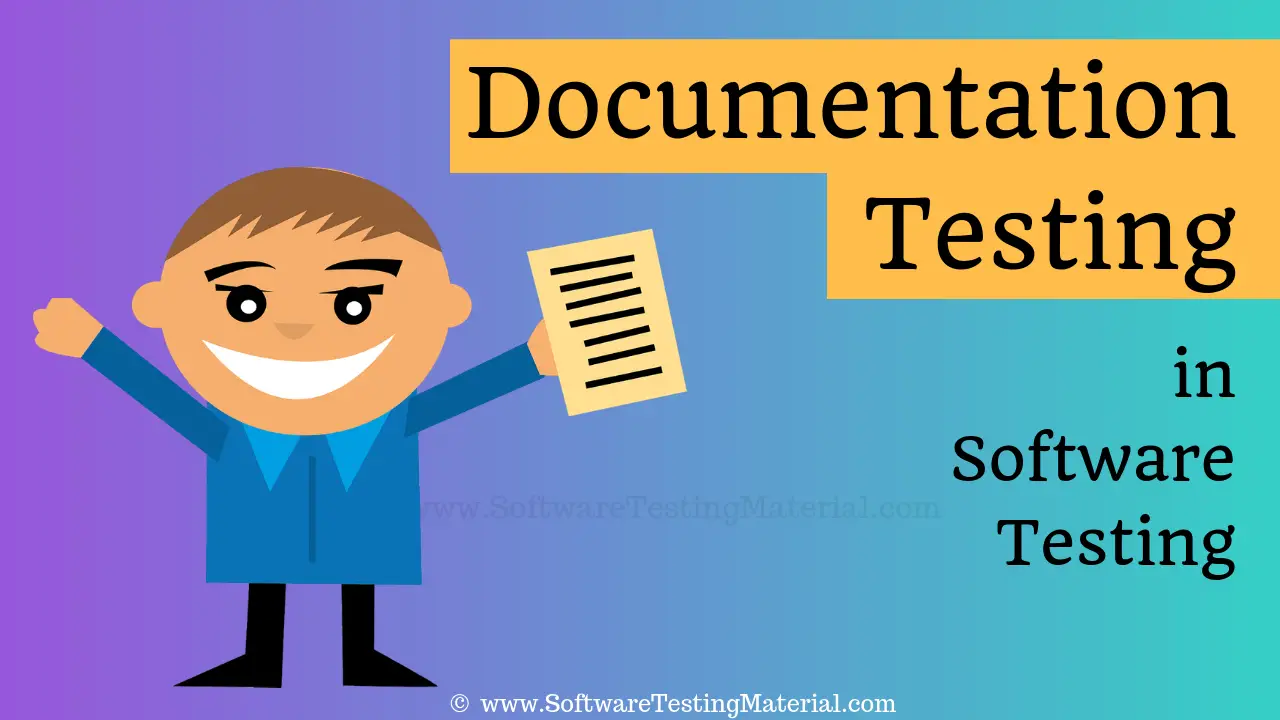
Lorem ipsum dolor sit amet, consectetur adipisicing elit. Impedit excepturi laborum enim, vitae ipsam atque eum, ad iusto consequuntur voluptas, esse doloribus. Perferendis porro quisquam vitae exercitationem aliquid, minus eos laborum repudiandae, cumque debitis iusto omnis praesentium? Laborum placeat sit adipisci illum tempore maxime, esse qui quae? Molestias excepturi corporis similique doloribus. Esse vitae earum architecto nulla non dolores illum at perspiciatis quod, et deleniti cupiditate reiciendis harum facere, delectus eum commodi soluta distinctio sit repudiandae possimus sunt. Ipsum, rem.

Programming with Mosh HTML Tutorial for Beginners: HTML Crash Course
freeCodeCamp.org Learn HTML – Full Tutorial for Beginners (2022)
codecademy
Learn HTML tart at the beginning by learning HTML basics — an important foundation for building and editing web pages.
mozilla
HTML: HyperText Markup Language HTML (HyperText Markup Language) is the most basic building block of the Web. It defines the meaning and structure of web content. Other technologies besides HTML are generally used to describe a web page's appearance/presentation (CSS) or functionality/behavior (JavaScript).
tutorialspoint
HTML Tutorial HTML stands for Hyper Text Markup Language, which is the most widely used language on Web to develop web pages. HTML was created by Berners-Lee in late 1991 but "HTML 2.0" was the first standard HTML specification which was published in 1995. HTML 4.01 was a major version of HTML and it was published in late 1999. Though HTML 4.01 version is widely used but currently we are having HTML-5 version which is an extension to HTML 4.01, and this version was published in 2012.
web.dev
Learn HTML This HTML course for web developers provides a solid overview for developers, from novice to expert level HTML. If you're completely new to HTML, you will learn how to build structurally sound content. If you've been building websites for years, this course may fill in gaps in knowledge that you didn't even know you had.
w3schools
Easy Learning with HTML "Try it Yourself" With our "Try it Yourself" editor, you can edit the HTML code and view the result:
geeksforgeeks
HTML stands for HyperText Markup Language. It is used to design web pages using the markup language. HTML is the combination of Hypertext and Markup language. Hypertext defines the link between the web pages and markup language defines the text document within the tag that define the structure of web pages.
theserverside
HTML | HyperText Markup Language. is a text-based approach to describing how content contained within an HTML file is structured. This markup tells a web browser how to display text, images and other forms of multimedia on a webpage.

Lorem ipsum dolor sit amet, consectetur adipisicing elit. Impedit excepturi laborum enim, vitae ipsam atque eum, ad iusto consequuntur voluptas, esse doloribus. Perferendis porro quisquam vitae exercitationem aliquid, minus eos laborum repudiandae, cumque debitis iusto omnis praesentium? Laborum placeat sit adipisci illum tempore maxime, esse qui quae? Molestias excepturi corporis similique doloribus. Esse vitae earum architecto nulla non dolores illum at perspiciatis quod, et deleniti cupiditate reiciendis harum facere, delectus eum commodi soluta distinctio sit repudiandae possimus sunt. Ipsum, rem.

Programming with Mosh HTML Tutorial for Beginners: HTML Crash Course
freeCodeCamp.org Learn HTML – Full Tutorial for Beginners (2022)
codecademy
Learn HTML tart at the beginning by learning HTML basics — an important foundation for building and editing web pages.
mozilla
HTML: HyperText Markup Language HTML (HyperText Markup Language) is the most basic building block of the Web. It defines the meaning and structure of web content. Other technologies besides HTML are generally used to describe a web page's appearance/presentation (CSS) or functionality/behavior (JavaScript).
tutorialspoint
HTML Tutorial HTML stands for Hyper Text Markup Language, which is the most widely used language on Web to develop web pages. HTML was created by Berners-Lee in late 1991 but "HTML 2.0" was the first standard HTML specification which was published in 1995. HTML 4.01 was a major version of HTML and it was published in late 1999. Though HTML 4.01 version is widely used but currently we are having HTML-5 version which is an extension to HTML 4.01, and this version was published in 2012.
web.dev
Learn HTML This HTML course for web developers provides a solid overview for developers, from novice to expert level HTML. If you're completely new to HTML, you will learn how to build structurally sound content. If you've been building websites for years, this course may fill in gaps in knowledge that you didn't even know you had.
w3schools
Easy Learning with HTML "Try it Yourself" With our "Try it Yourself" editor, you can edit the HTML code and view the result:
geeksforgeeks
HTML stands for HyperText Markup Language. It is used to design web pages using the markup language. HTML is the combination of Hypertext and Markup language. Hypertext defines the link between the web pages and markup language defines the text document within the tag that define the structure of web pages.
theserverside
HTML | HyperText Markup Language. is a text-based approach to describing how content contained within an HTML file is structured. This markup tells a web browser how to display text, images and other forms of multimedia on a webpage.